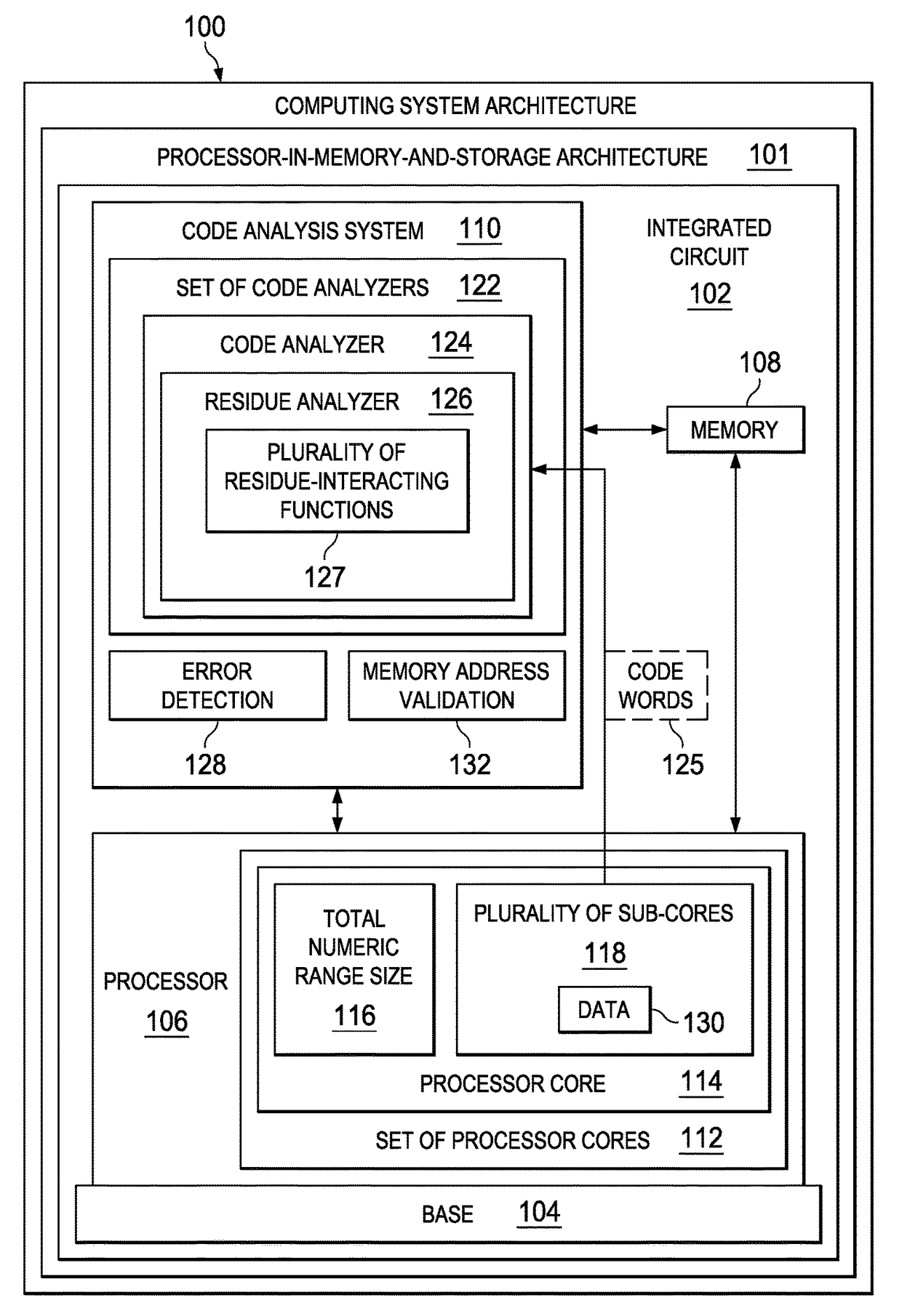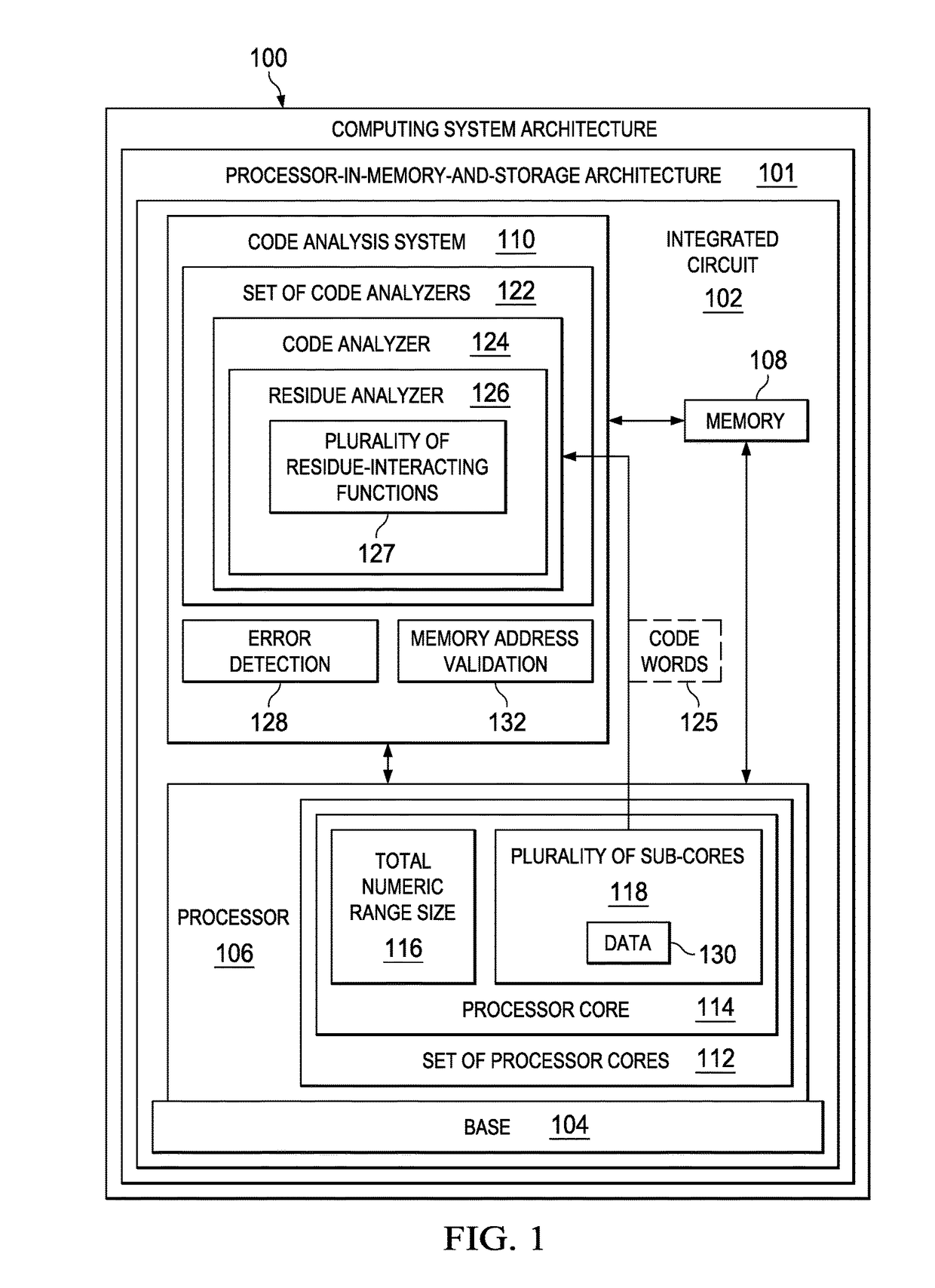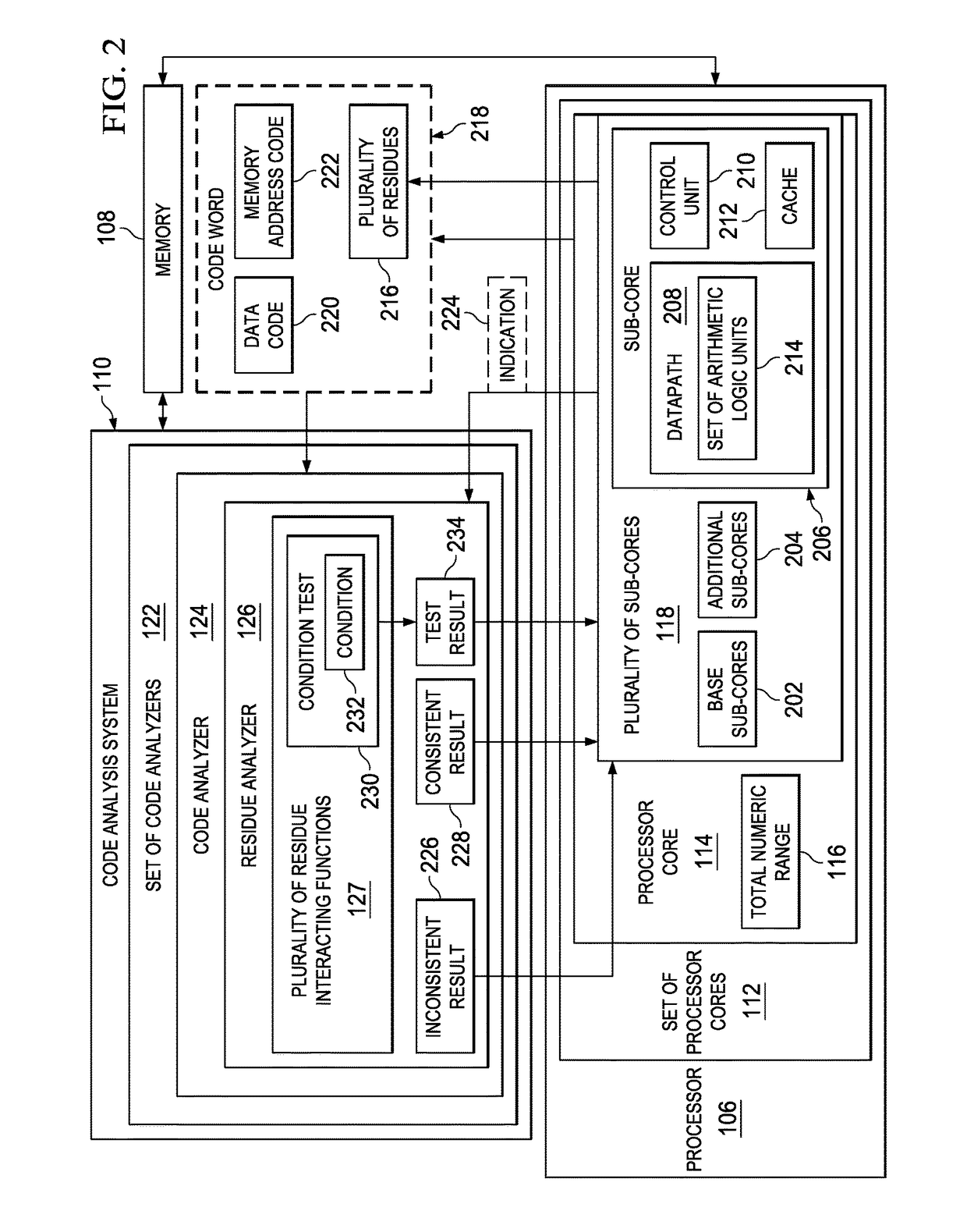Processor-in-memory-and-storage architecture
a technology of memory and storage architecture, applied in the field of computing systems, can solve problems such as reducing the power or energy of signals, causing reliability concerns, and reducing the energy efficiency of computing systems while ensuring reliability
- Summary
- Abstract
- Description
- Claims
- Application Information
AI Technical Summary
Benefits of technology
Problems solved by technology
Method used
Image
Examples
Embodiment Construction
[0032]The illustrative embodiments recognize and take into account different considerations. For example, the illustrative embodiments recognize and take into account that it may be desirable to have a computing system that is both energy efficient and reliable. In particular, the illustrative embodiments recognize and take into account that error mitigation and energy recycling may be used to improve the energy efficiency and reliability of a computing system.
[0033]The illustrative embodiments recognize and take into account that error mitigation may be used to improve the reliability of a computing system that may be prone to data errors and memory address errors due to lower-powered transistors. In one illustrative example, a redundant residue number system (RRNS) may be used to mitigate errors in data and errors in memory addresses.
[0034]Further, the illustrative embodiments recognize and take into account that energy recycling may be used to improve the energy efficiency of mem...
PUM
 Login to View More
Login to View More Abstract
Description
Claims
Application Information
 Login to View More
Login to View More - R&D
- Intellectual Property
- Life Sciences
- Materials
- Tech Scout
- Unparalleled Data Quality
- Higher Quality Content
- 60% Fewer Hallucinations
Browse by: Latest US Patents, China's latest patents, Technical Efficacy Thesaurus, Application Domain, Technology Topic, Popular Technical Reports.
© 2025 PatSnap. All rights reserved.Legal|Privacy policy|Modern Slavery Act Transparency Statement|Sitemap|About US| Contact US: help@patsnap.com



